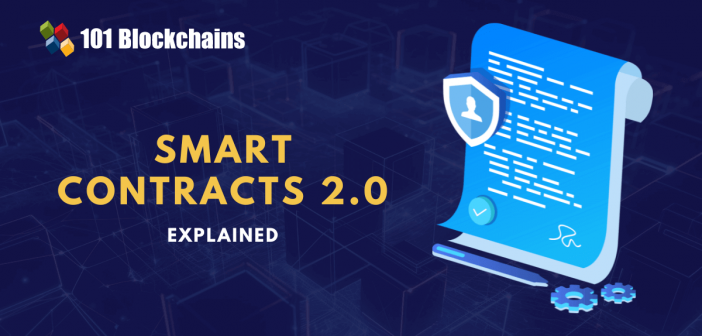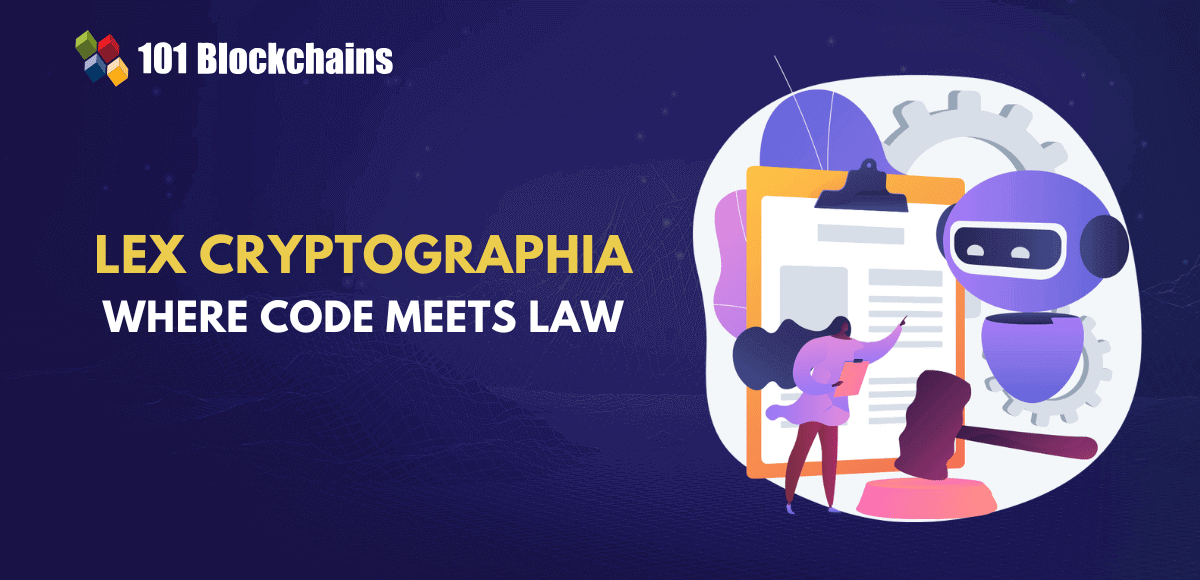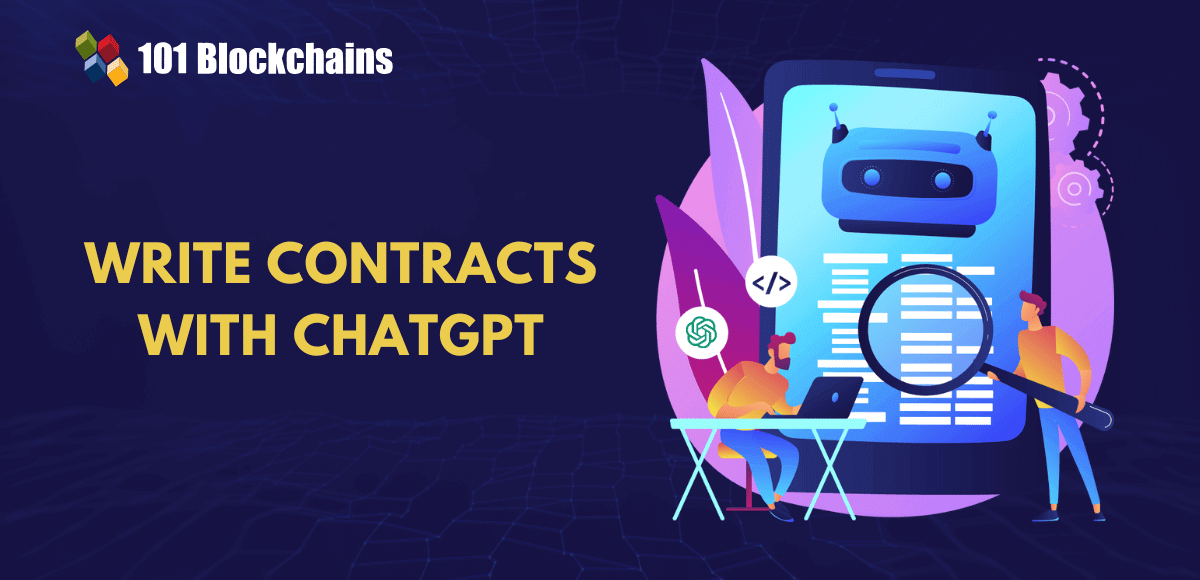Learn how blockchain truly works, master key definitions, and uncover what makes smart contracts so "smart." Dive into the fundamentals, gain valuable insights, and start your blockchain journey today!

- Solidity & Smart Contracts
Georgia Weston
- on July 22, 2023
Smart Contracts 2.0 – A Comprehensive Guide
Blockchain technology offered a revolutionary transformation in recording and sharing data. Another promising addition to the blockchain landscape emerged in the form of smart contracts, which showed a new perspective on automation. The self-executing pieces of code offered a new definition for executing transactions according to pre-defined conditions. Interestingly, the blockchain community has been discussing smart contract 2.0 news and the possibilities for improving smart contract functionalities.
The rapid pace of evolution in smart contract technology is a clear indication for introducing the next generation of smart contracts with advanced functionalities. Hedera has taken the initiative to introduce smart contracts 2.0, which can open new opportunities for developing programmable digital assets. The following smart contracts 2.0 explained post offers an introduction and a deep dive into the latest news updates about the technology.
Curious to understand the complete smart contract development lifecycle? Enroll in Smart Contracts Development Course Now!
Definition of Smart Contracts
The first thing you need to learn about smart contracts 2.0 is the definition of smart contracts. The descriptions of smart contracts 2.0 explained can have better clarity with a clear definition of their predecessors.
Smart contracts are digital versions of traditional contracts and specify the conditions of an agreement. What is the special highlight of smart contracts which makes them ‘smart’? The answer would point to the use of blockchain technology to exclude the role of intermediaries in the execution of the terms of a contract.
Smart contracts use code on a blockchain network for establishing, verifying and executing the terms of an agreement. From a technical perspective, smart contracts are arbitrary deterministic business logic represented in code, which works on a distributed system. The governance of the code underlying smart contracts is completely decentralized, thereby removing any concerns of bias in executing agreements.
Want to know the real-world examples of smart contracts and understand how you can use it for your business? Check the presentation on Examples of Smart Contracts!
Why Does the Blockchain Ecosystem Need Smart Contracts 2.0?
The blockchain ecosystem needs smart contracts 2.0 for an obvious reason, i.e. to address setbacks associated with existing smart contracts. Most of the answers to “What is smart contract 2.0?” would reflect on the limitations of smart contracts 1.0.
The introduction of smart contracts served as a milestone in the history of blockchain and changed the technology landscape. Smart contracts provided an innovative approach to the automation of traditional processes. The blockchain ecosystem also leveraged smart contracts for creating dApps on blockchain and distributed ledger networks.
Smart contracts expanded the scope of blockchain and DLT applications beyond cryptocurrencies. Smart contracts helped implement blockchain and distributed ledger technologies for supply chain management, voting systems, decentralized autonomous organizations and many other applications.
With such a massive impact, how does one think of introducing an upgrade to smart Contracts 1.0? Do the existing smart contracts need to be more capable of managing the radical growth in digital transformation? You can find many questions like these in a smart contract 2.0 FAQ collection, reflecting on the factors underlying the origins of smart contract 2.0.
The technologies such as EVM and Solidity programming offer significant benefits and showcase the road towards new possibilities. However, the limitations associated with existing smart contracts have prevented their large-scale adoption.
Build your identity as a certified blockchain expert with 101 Blockchains’ Blockchain Certifications designed to provide enhanced career prospects.
Limitations with Smart Contracts 1.0
The setbacks associated with smart Contracts 1.0 include slower transaction confirmation, issues in operational predictability and higher operational costs. On top of it, the responses to questions such as “Is smart contract 2.0 coming out?” would point to the logic-related setbacks in smart contracts.
Vulnerabilities in smart contract code are one of the common reasons for losses due to hacking attacks. For example, hackers stole cryptocurrencies worth $613 million from the Poly Network by compromising a vulnerability in the network’s smart contract.
Definition of Smart Contracts 2.0
The setbacks with smart Contracts 1.0 provide a clear impression of the necessity of smart Contracts 2.0. You can find a clear explanation for “What is smart contract 2.0?” in the mandatory saturation phase for every new technology.
Smart contract 2.0 is the next stage in the evolution of smart contract technologies, and it leverages the original concept associated with smart contracts. How does smart contracts 2.0 differ from smart contracts 1.0? The additional advantage of smart Contracts 2.0 is evident in the ability to use modern technologies such as oracles, IoT and artificial intelligence. Smart contracts 2.0 can offer multiple advantages over existing smart contracts with improved functionalities.
One of the first highlights in the fundamentals of smart contracts 2.0 explained for beginners would be the complexity of the tasks they can handle. For example, oracles can help smart Contracts 2.0 access external data sources through oracles, thereby improving the effectiveness of their decision-making. Smart contracts 2.0 also offer better security with the help of advanced encryption algorithms and in-built security protocols.
On top of it, smart contracts 2.0 can also offer the assurance of improved efficiency and almost real-time transaction settlement with lower gas fees. Another good advantage associated with smart contracts 2.0 is the assurance of better scalability, thereby supporting dApps that could manage high-volume transactions.
The highlights of smart contract 2.0 news also suggest better interoperability that could help blockchain networks communicate. Interoperability can serve as a major advantage for smart contracts, with the advantage of cross-chain asset transfer. It can also ensure an easier exchange of information between two different blockchain and distributed ledger technology platforms.
Learn the fundamentals of Blockchain through Blockchain Basics Flashcards
Working of Smart Contracts 2.0
The first distributed ledger technology platform to introduce smart contracts 2.0 is Hedera Hashgraph. You should also note that Smart Contract 2.0 FAQ collections would include mandatory references to Hedera as it established the vision for Smart Contract 2.0. Hedera leveraged inferences from the communities of open-source smart contracts developers working on EVM-based projects.
The Hashgraph consensus algorithm, alongside the new approach of the Hedera core development team, aims at upgrading the Hedera Smart Contracts Service. The foundations of smart contracts 2.0 by Hedera focus on achieving prolific improvements in performance metrics.
Hedera aims to use the concept of smart contracts 2.0 for scaling EVM to improve transaction speeds. It can ensure that smart contracts 2.0 can offer higher transaction speeds, almost 13 times more than the Ethereum mainnet.
The answers to “Is smart contract 2.0 coming out?” also refer to the possibility of processing more EVM-based smart contract transactions in each second, as compared to Ethereum. Hedera does not follow the concept of a block alongside the transactions, which have been organized in a specific order of timestamps.
In addition, Hedera also plans on using smart contracts 2.0 to avoid frontrunner attacks, which could involve prioritization of transactions over others. As a result, Hedera could offer an ideal ecosystem for expanding DeFi projects and financial markets.
How Does Hedera Offer the Advantages of Smart Contracts 2.0?
Hedera has emerged as a pioneer in the development of smart contracts 2.0 with its unique specialization. The working of smart contracts 2.0 explained for beginners has shown that Hedera does not demand any block confirmation. Therefore, it can ensure fair distribution of the order of transactions, accessibility, fees and timestamps.
On top of it, Hedera also aims to improve the security of smart contracts 2.0 with an asynchronous BFT consensus mechanism, which ensures a gold standard for security. The development of smart contracts 2.0 on Hedera also ensures a positive impact on the environment with its carbon-negative impact.
The prominent advantages of smart contracts 2.0 in terms of efficiency improvements might take the limelight. However, Hedera offers promising advantages with the option for customized programmability with the features for integrating traits of Hedera Token Service and Hedera Consensus Service. Hedera smart contracts could help in calling native HTS functions from smart contracts.
The HTS functions can include the combination of the power and cost efficiency of Hedera Token Service featuring the arbitrary deterministic logic associated with smart contracts. As of now, smart contracts can offer the advantages of minting, transferring, burning and associating with HTS on Hedera. The functionalities of Hedera smart contracts 2.0 can help in the introduction of facilities for integrating smart contracts in HTS. It can ensure that digital assets on Hedera would be similar to the EVM-standard digital asset contract formats such as ERC-20.
Want to become an expert in Hedera Network Services? Enroll Now in Hedera Fundamentals Course!
Where Will You Use Smart Contracts 2.0?
The HBAR Foundation, a platform for offering resources to empower Solidity developers on Hedera hashgraph, has come up with comprehensive guidance about creating smart contracts 2.0. You can find the latest smart contract 2.0 news on the platform, alongside a detailed overview of its implications.
First of all, a major use case with smart contracts points to DeFi. Smart contracts enable users to avoid placing their trust in a bank, an individual or a financial institutions. On the contrary, smart contracts work through trust in the code and the governance mechanisms established for the code. It is important to note that smart contract code is transparent and could feature errors and vulnerabilities. Transparency provides the assurance of identifying and improving upon the flaws through effective governance mechanisms.
The introduction of smart contracts 2.0 would also refer to Galaxy, a Creator Economy-centric application. It aims at using smart contracts for managing social tokens alongside the underlying collateral. Calaxy could provide an example of smart contracts 2.0 explained with details about their potential impact in the future.
It visualizes a future which allows every individual to have possession of their own social tokens. Community members and followers could use the social tokens to enjoy familiar experiences in the digital and physical world. Smart contracts 2.0 could ensure that only the “Creators” would have access to desired capital and liquidity.
Want to get an in-depth understanding of Solidity concepts? Enroll in Solidity Fundamentals Course Now!
Long-term Implications of Smart Contracts 2.0
The basics of smart contracts 2.0 also draw attention towards the long-term possibilities associated with them. Smart contracts 2.0 could accept deposits in the form of popular stablecoins alongside other recognized methods for collateral. In addition, the latest updates about “Is smart contract 2.0 coming out?” would point at the flexibility of minting or burning social tokens in the right manner. You should notice that such an approach for collateralization can help fans in achieving consistent accessibility of a Creator economy.
Smart Contracts 2.0 can help in avoiding the problems of smart contracts 1.0 by excluding the problems of vendor lock-in by referring to the censorship resistance and immutability of smart contracts. For example, a follower could deposit around $10 for receiving around ten SGD26 creator tokens.
In this case, the ledger would update after the transaction, thereby implying that the transaction has been reversed, modified or altered. Smart contracts 2.0 can provide a boost to the smart contract ecosystem alongside empowering the new generation of DeFi protocols on Hedera. Some of the notable traits associated with smart contracts 2.0 include high throughput, better security and stability in governance.
In the case of complex scenarios, like decentralized exchanges, the order book can be subject to management through smart contracts. You can also find an Automated Market Maker in the case of many decentralized exchanges. Hedera has come up with the smart contracts 2.0 update to address the need for creating high-performance applications alongside issuing digital-native real-world assets.
One of the examples in a Smart Contract 2.0 FAQ would point to the open-source Guardian platform. You can find auditable logs on the Hedera Consensus Service for verifiable data. Smart contracts could operate an ARM by leveraging machine learning algorithms for interpretation of metadata associated with the tokens.
Want to become smart contract developer? Checkout our detailed guide on How To Become A Smart Contract Developer?
Conclusion
The final impression regarding the origins and answers for “What is smart contract 2.0?” would point to the role of Hedera as a pioneer. Smart contracts 1.0 have been associated with a broad range of setbacks ranging from transaction finality to security and scalability. Smart Contracts 2.0 bring new technologies and provides a viable explanation for optimizing smart contracts to achieve better performance.
You can also learn about the news updates about other blockchain-based networks planning on adoption of smart contracts 2.0. Start learning more about smart contracts and how they can provide new definitions to the world of blockchain and web3. Know more about smart contract development best practices before learning about Smart Contracts 2.0.
*Disclaimer: The article should not be taken as, and is not intended to provide any investment advice. Claims made in this article do not constitute investment advice and should not be taken as such. 101 Blockchains shall not be responsible for any loss sustained by any person who relies on this article. Do your own research!





